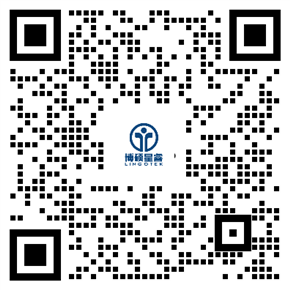2024年12月15日 10:50 天津
×
2024年秋季
脉冲调查结果
Autumn 2024 Pulse survey results

市场环境的变化影响着各行各业,口笔译行业也受到人工智能的影响,好坏参半。ITI 2024年秋季脉冲调查结果显示,尽管市场环境依然充满挑战,但ITI会员正在通过培训不断提升技能,积极应对行业变化。同时,随着全球经济一体化的加速,口笔译市场对专业领域人才的需求日益增长,利用好技术这把双刃剑,也许翻译能够在人工智能的影响下取得更好更积极的成效。
Findings from ITI’s latest Pulse survey1 reveal that market conditions continue to pose challenges, but ITI members are responding by investing in training to update their skills.
英国口笔译协会(简称ITI)最新的脉冲调查结果显示,尽管市场环境依然充满挑战,但 ITI 会员正在通过投资培训不断提升技能,积极应对行业变化。
ITI’s Pulse survey provides a snapshot of the translation and interpreting market and how trends and economic pressures have been affecting it. The downward trend in confidence continues, with 30% feeling either ‘very positive’ or ‘positive’ about their work prospects in the current business environment, compared to 33% six months ago.
ITI 的脉冲调查反映了口笔译市场的现状及其受趋势和经济压力影响的具体情况。信心持续下滑,仅有30% 的受访者对当前商业环境下的工作前景表示“非常乐观”或“乐观”,而六个月前这一比例为 33%。
However, there was an increase in the number feeling ‘neither positive nor negative’ (up from 25% to 30%) and a slight reduction in the number feeling either ‘very negative’ or ‘negative’ (down from 42% to 40%) which may indicate the start of a shift in outlook.
然而,认为“既不乐观也不悲观”的人数有所增加(从 25% 上升至 30%),而认为“非常悲观”或“悲观”的人数则略有减少(从 42% 下降至 40%),这可能预示着态度正在发生转变。
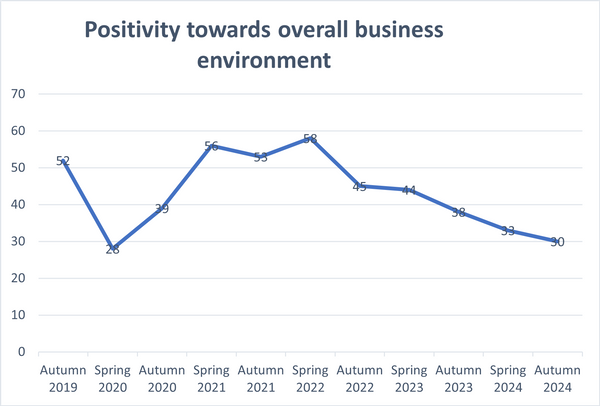
55% of respondents have gained some business from new clients in the last 12 months (down from 58% in spring 2024), with 5% having gained a significant amount (the same as previously). 10% have gained more work from existing clients (9% previously), while 51% reported that the amount of work coming from existing clients has decreased (vs 49% in spring 2024) and a further 9% have lost existing clients (same as previously).
55% 的受访者在过去 12 个月内从新客户获得了一些业务(低于 2024 年春季的 58%),其中 5% 获得了大量业务(与此前持平)。10% 的受访者从现有客户获得了更多业务(之前为 9%),而 51% 表示来自现有客户的业务量有所减少(较2024 年春季为的49%略有增加),另有 9% 表示失去了现有客户(与此前持平)。
For the majority (51%), earnings per word / contract / hour have remained much the same over the past 12 months. However, there is some good news in relation to earnings. The percentage seeing an improvement has increased to 26% (21% previously) and those experiencing a reduction has reduced to 23% from 27% in spring 2024.
对于大多数人(51%)来说,过去 12 个月中每字、每合同或每小时的收入基本保持不变。 不过,在收入方面也有一些好消息。收入增加的比例已上升至 26%(之前为 21%),而收入减少的比例则从 2024 年春季的 27% 降至 23%。
Taking mitigating action
and building resilience
积极应对挑战,构建复原能力
Given the uncertainty in the market, it makes sense that members are continuing to look at ways to replace or boost income, with many having sought either new direct clients or agency clients. Significantly, the number seeking more direct clients has increased from 29% 18 months ago to 35% in this latest survey. This is interesting in light of the preliminary results of the Changing2 Status project that were presented at the ITI Conference 2024. There are indications that changes in the market are placing stress on the mid-sized language service companies; we have also, sadly, seen a couple of well-respected translation agencies closing their doors this year.
鉴于市场的不确定性,会员们继续寻求替代或增加收入的途径合情合理,许多译员已经开始寻找新的直接客户或翻译公司。值得注意的是,寻求更多直接客户的比例从 18 个月前的 29% 增加到最新调查中的 35%。从 2024 年 ITI 年会上发布的《追求地位:英国自由职业翻译行业的可持续性》研究的初步结果来看,这一点尤为有趣。有迹象表明,市场变化正对中型语言服务公司造成压力;令人遗憾的是,一些声誉卓著的翻译公司也在今年停业关门。
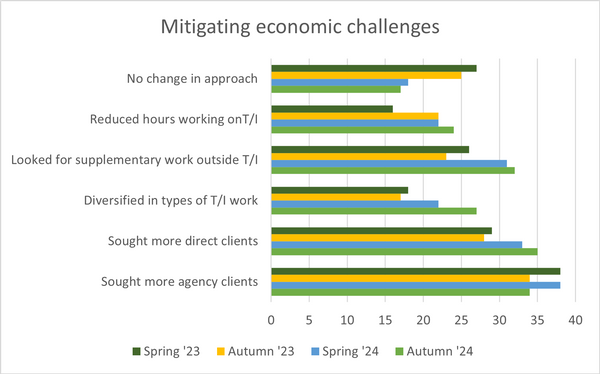
Included in the survey this time was a question about steps respondents have taken to make themselves and their business more resilient. Overall, 63% have already invested in training to update their skills (with a further 11% considering it), 58% have cut non-essential expenses and 43% have diversified their client base.
此次调查中包含了一项关于受访者为提升自身及其业务抗风险能力所采取的措施的问题。总体而言,63% 的受访者已经投资培训以更新技能(另有 11% 正在考虑此举),58% 削减了非必要开支,43% 则拓展了客户群。
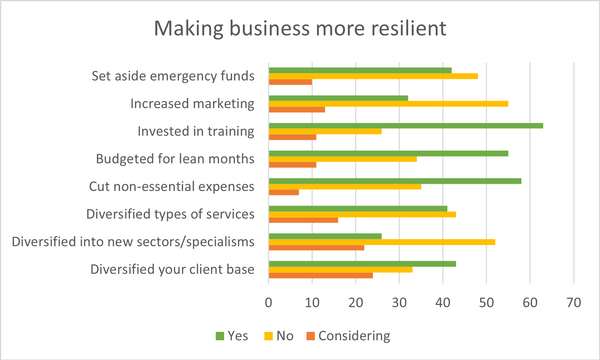
It is worth noting that those who have a more positive outlook about their work prospects are, on the whole, more likely to have taken mitigating action, compared to those feeling more negative.
值得注意的是,与持悲观看法的人相比,持更积极工作前景看法的人通常更倾向于采取应对措施。
72% of those feeling positive have already invested in training vs 53% of those feeling negative. 31% have diversified into new sectors, vs 18% of those feeling negative about their prospects, and 41% have sought more direct clients vs 37%.
持乐观态度的受访者中,72% 已经投资于培训,而持悲观态度的受访者中这一比例为 53%。31% 的受访者已拓展到新行业,而持悲观看法的受访者中,这一比例为 18%;41% 的受访者寻求更多直接客户,而持悲观看法的受访者中,这一比例为 37%。
So, although conditions may be difficult it appears that those prepared to adapt and develop themselves and their business do Impact of AI.
因此,尽管市场环境可能艰难,但那些愿意适应并发展自己及业务的人,似乎能够在人工智能的影响下取得积极成效。
Feeling more optimistic
about the future
展望未来,信心提升
Increasingly, respondents feel they understand the impact generative AI is likely to have on the translation and interpreting sector. This has risen from an average of 2.8 to 3.3 / 5 in the time that we have been tracking it. With this understanding can come concerns, but also the ability to respond in positive ways, as shown above.
越来越多的受访者表示,他们对生成式人工智能可能对口笔译行业产生的影响有了更深入的理解。在跟踪调查期间,这一比例从平均 2.8/5 上升至 3.3/5。如上所示,这种理解可能会引发一些担忧,但也能激发以积极方式应对挑战的能力。
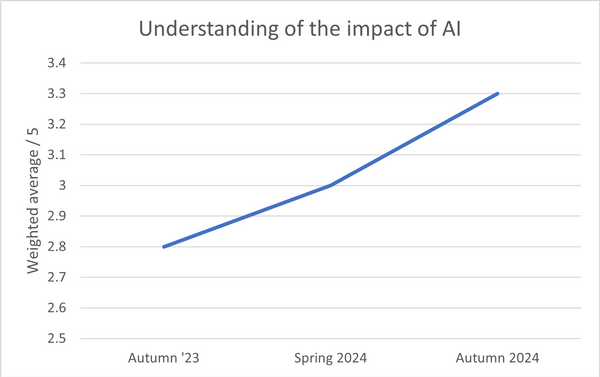
42% of respondents are either very or extremely concerned about the potential impact of AI on future earnings, up from 39% six months ago.
42% 的受访者对人工智能可能对未来收入产生的影响感到非常担忧或极为担忧,较六个月前的 39% 有所上升。
The number of respondents incorporating AI tools into their workflow is steadily rising with 24% now making use of them — up from 17% compared to a year ago. This growing interest is reflected in the popularity of ITI’s AI-focused training courses. From the 10-week Translation and AI course in collaboration with the University of Surrey, to workshops introducing AI tools, these have been some of the most popular training we have offered over the last year. ITI remains committed to providing relevant training that will help you to adapt and succeed as the landscape evolves.
将人工智能工具纳入工作流程的受访者数量正在稳步上升,目前已有 24% 的受访者在使用这些工具,较一年前的17%有所增长。从 ITI 人工智能相关培训课程的受欢迎程度可以看出这种日益增长的兴趣。从与萨里大学合作的 10 周翻译与人工智能课程,到介绍人工智能工具的工作坊,这些都成为过去一年最受欢迎的培训课程。ITI 始终致力于提供相关培训,帮助翻译行业从业者在行业变化中不断适应并取得成功。
注释:
1. Pulse survey:脉冲调查(Pulse Survey)是一种定期进行的反馈收集机制,旨在持续监控和评估组织内的关键业务指标和员工情绪。这种调查方法通过发送一系列简短的问题来收集员工的即时反馈,从而帮助组织快速了解员工的感受、态度和行为。
2.Changing应为chasing.
特别说明:本文内容选自官网,仅供学习交流使用,如有侵权请后台联系小编删除。
添加助教

– END –

